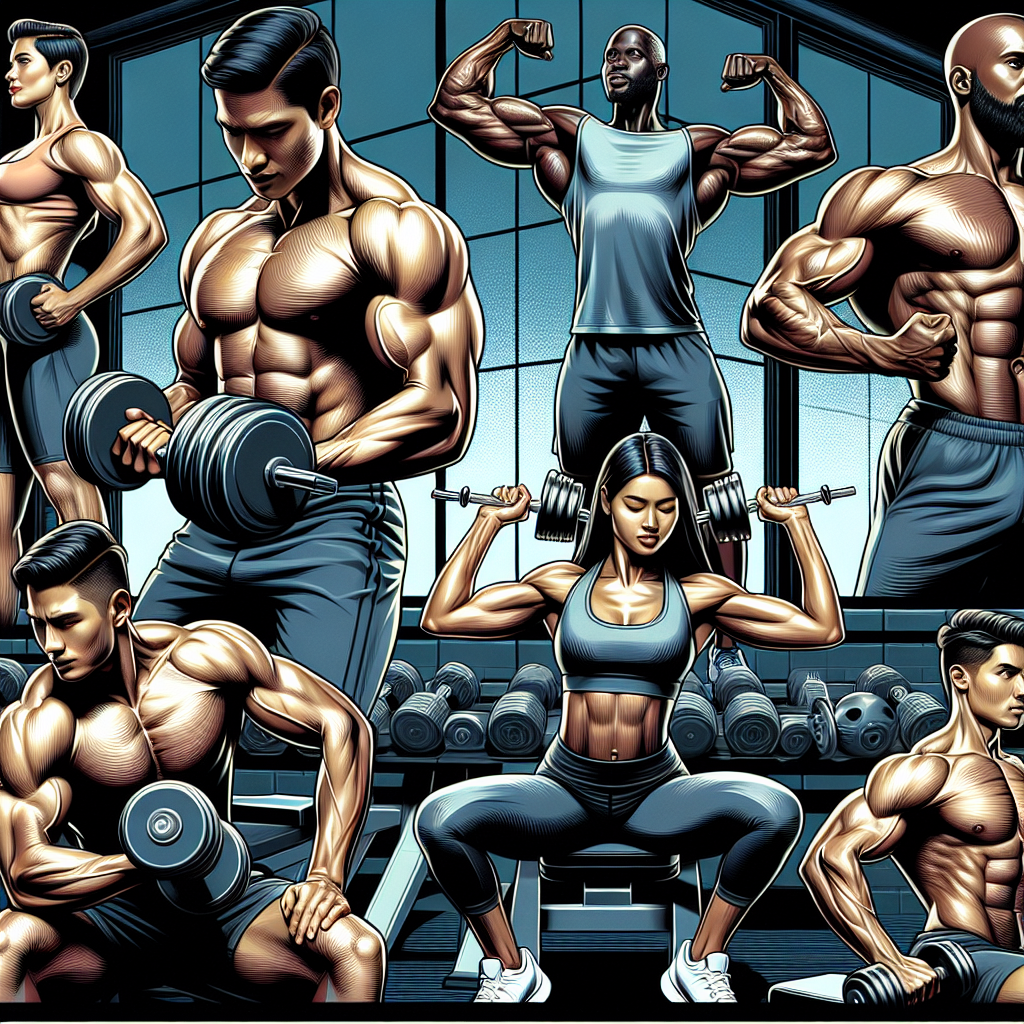
How to make your biceps bigger
How to Make Your Biceps Bigger: The Ultimate Guide
If you're looking to enhance your arm aesthetics and strength, you're likely on a quest to discover the best ways to boost your bicep size. Whether you're a beginner or a seasoned gym-goer, understanding how to effectively train your biceps is crucial for achieving your fitness goals. In this comprehensive guide, we will explore various aspects of bicep training, including exercises, nutrition, recovery, and common mistakes to avoid. Let's delve into the world of bicep growth!
The Anatomy of the Biceps
Before diving into specific exercises and techniques, it’s important to understand the anatomy of the biceps. The biceps brachii muscle consists of two heads: the long head and the short head. The long head runs along the outer part of your arm, while the short head is located on the inner part. Understanding these muscle groups can help you tailor your workouts to target them effectively.
Effective Bicep Exercises
When it comes to making your biceps bigger, choosing the right exercises is key. Here’s a list of some of the most effective bicep exercises you should include in your routine:
- Bicep Curls: A classic move that primarily targets the biceps. Variations include standing curls, seated curls, and concentration curls.
- Hammer Curls: This variation emphasizes the brachialis and brachioradialis, which can help add thickness to your arms.
- Pull-Ups: While they are a compound exercise, pull-ups engage your biceps significantly and help in overall muscle growth.
- Chin-Ups: Similar to pull-ups, chin-ups put a greater emphasis on the biceps due to the supinated grip.
- Preacher Curls: This isolation exercise focuses on the biceps and helps control the weight throughout the movement.
Creating a Balanced Workout Plan
To effectively implement these exercises, you need a well-structured workout plan. Here is a sample bicep workout routine:
- Warm-up: 5-10 minutes of light cardio and dynamic stretches.
- Bicep Curls: 3 sets of 10-12 reps.
- Hammer Curls: 3 sets of 10-12 reps.
- Pull-Ups or Chin-Ups: 3 sets of 6-10 reps (choose based on your ability).
- Preacher Curls: 3 sets of 10-12 reps.
- Cool down: Stretching the arms and shoulders.
Make sure to allow for adequate rest between sets (about 60-90 seconds) and adjust the weight according to your capacity.
Nutritional Considerations for Bicep Growth
It's not just about working out; your diet plays a crucial role in building muscle, including your biceps. Here are some nutritional tips to support muscle growth:
- Increase Protein Intake: Protein is essential for muscle repair and growth. Aim for a daily intake of about 1.6 to 2.2 grams of protein per kilogram of body weight.
- Stay Hydrated: Proper hydration supports muscle function and recovery.
- Eat Enough Calories: To facilitate muscle growth, consume a slight caloric surplus.
- Include Healthy Fats: Essential fatty acids play a role in hormone production, which is important for muscle growth.
Supplements to Consider
While a balanced diet is the foundation of muscle growth, certain supplements can enhance your progress:
- Whey Protein: A convenient source of protein post-workout.
- Creatine: Supports increased strength and muscle mass.
- BCAAs: May help with muscle recovery and reduce soreness.
Always consult with a healthcare provider before starting any new supplements, especially if you have underlying health conditions.
Importance of Recovery
Building bigger biceps isn’t solely about working them hard; recovery is equally important. A well-balanced recovery plan should include:
- Rest Days: Allow time for your muscles to recover and grow, ideally taking 48 hours between intense workouts targeting the same muscle group.
- Sleep: Aim for 7-9 hours of quality sleep each night to support overall recovery and muscle growth.
- Active Recovery: Including light activity or mobility work on rest days can help improve blood flow and reduce soreness.
Common Mistakes to Avoid
When training your biceps, it’s vital to be aware of common mistakes that can hinder your progress. Here are some pitfalls to avoid:
- Neglecting Form: Prioritize good form over lifting heavy weights to prevent injury.
- Not Varying Exercises: Keep your routine fresh by incorporating a variety of exercises and techniques.
- Overtraining: Allow for adequate recovery to prevent burnout and muscle strain.
Tracking Your Progress
Tracking your progress is crucial for staying motivated and ensuring you're making gains. Here’s how you can do it:
- Keep a Workout Log: Record the exercises, weights, and repetitions to monitor your improvements.
- Take Photos: Periodically take photos to visually assess your muscle growth.
- Measure Your Biceps: Use a measuring tape every few weeks to track size changes.
The Psychological Aspect of Muscle Building
Building muscle, including your biceps, is not just a physical challenge; it’s also a mental one. Stay motivated by:
- Setting Realistic Goals: Write down your short-term and long-term fitness goals.
- Finding a Workout Buddy: Training with someone can keep you accountable and make workouts more enjoyable.
- Celebrating Small Wins: Reward yourself for reaching milestones along the way.
Conclusion
By following this ultimate guide on how to make your biceps bigger, you can create a comprehensive plan that includes effective exercises, proper nutrition, and recovery strategies. Remember that consistent effort over time is key to success in any fitness endeavor. Stay focused, avoid common pitfalls, and don’t hesitate to adapt your routine as needed. Whether you're looking to showcase your gains at the beach or simply want to increase your strength, every step you take towards this goal will bring you closer to your desired outcome!
By Guest, Published on August 6th, 2024